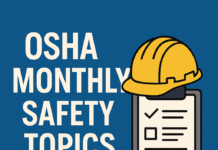
OSHA Fall Protection Plan Requirements
The Occupational Safety and Health Administration (OSHA) in the United States has specific requirements for fall protection plans to ensure the safety of workers at heights. Here are key elements that OSHA typically expects to be included in a fall protection plan:- Site-specific information:
- Identify the location and description of the workplace.
- Specify the work operations being conducted.
- Fall hazards assessment:
- Conduct a thorough assessment of potential fall hazards.
- Identify locations where fall protection measures are necessary.
- Fall protection methods:
- Specify the methods and systems to be used for fall protection.
- Include details about guardrails, safety nets, personal fall arrest systems, and other relevant equipment.
- Training and education:
- Outline the training and education provided to workers regarding fall hazards and the use of fall protection systems.
- Include information on how often training will be conducted.
- Rescue plan:
- Develop a plan for promptly rescuing workers in the event of a fall.
- Ensure that rescue personnel are adequately trained and available.
- Inspection and maintenance:
- Establish a schedule for regularly inspecting and maintaining fall protection equipment.
- Clearly define responsibilities for equipment inspection and maintenance.
- Roles and responsibilities:
- Specify the roles and responsibilities of individuals involved in the fall protection program.
- Clearly identify the competent person responsible for overseeing the program.
- Prompt correction of hazards:
- Outline procedures for correcting identified fall hazards in a timely manner.
- Ensure that corrections are made before work resumes in the affected area.
- Recordkeeping:
- Keep records of training, inspections, and any incidents involving falls.
- Maintain documentation to demonstrate compliance with OSHA regulations.
- Review and update:
- Establish a process for periodically reviewing and updating the fall protection plan.
- Ensure that the plan remains effective as work conditions change.
Occupational Health and Safety Administration (OSHA)
OSHA 500 Trainer Course: Fees, Eligibility, Duration, Syllabus, Exam, How To Apply
OSHA 30 Hour Construction Training Course: Fees, Eligibility, Duration, Syllabus, Exam, How To Apply
It's important to note that the specific requirements may vary based on the nature of the work and the industry. Employers should refer to OSHA regulations (29 CFR 1926.501) and consult with safety professionals to tailor the fall protection plan to their specific circumstances.























